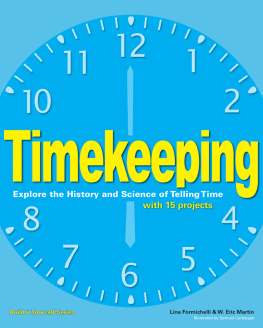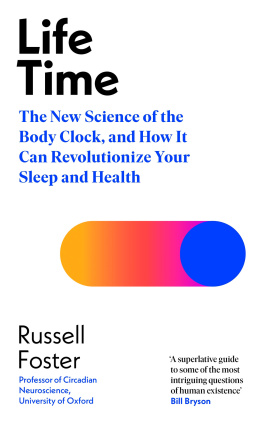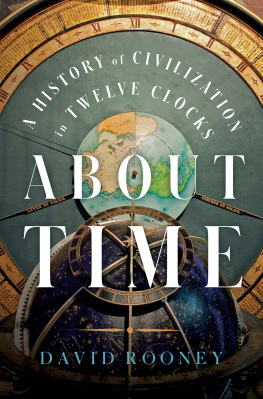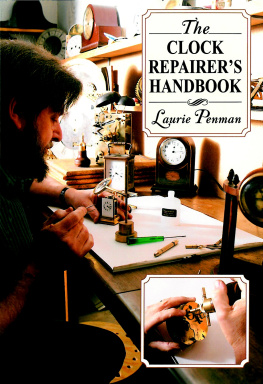RHYTHMS OF LIFE
Russell Foster and Leon Kreitzman are experts in the field of biological clocks and, with great skill, give us an up-to-date and readable account of what we know today about the time cycles that affect the majority of all living organisms, including ourselves. TLS
This book will inspire readers from the most diverse backgrounds.
Professor Dr. Till Roenneberg, Professor of Chronobiology,
Ludwig-Maximilians-University, Munich
An intriguing and highly detailed account. Observer
The exploration of our antagonistic relationship with our biological clocks is compelling. Glasgow Herald
A fascinating account, both technical and very readable.
Professor Lewis Wolpert, Anatomy and Developmental Biology, UCL
Rhythms of Life explores the tension between the
way we want to live and the way we are built to live awareness in chronotherapy is still low, however this book will start changing that. Scotland on Sunday
Illuminating thought-provoking Guardian
Interesting and accessible to non-biologists from simple description to complex argument; this book has much to offer. Oxford Times
Russell Foster is Professor of Molecular Neuroscience at the Imperial College Faculty of Medicine and a leading international authority on circadian rhythms. He is part of a NASA research team studying ways to improve the living conditions for manned space flights to Mars.
Leon Kreitzman is a writer, broadcaster and a leading futurist. His previous book, The 24 Hour Society (Profile), explored the social implications of a 24/7 world. For this book, he has gone back to his roots as a biochemist to help explain the scientific basis of biological rhythms.
RHYTHMS OF LIFE
The Biological Clocks that Control the Daily Lives of Every Living Thing
Russell G. Foster & Leon Kreitzman

To my wife Elizabeth and children, Charlotte, William and Victoria,
and to my Mother, and the memory of my Grandparents
George and Rose Dixon (RGF)
To my wife Linda and children Sophie and Leah (LK)
This paperback edition published in 2005
First published in Great Britain in 2004 by
Profile Books Ltd
58A Hatton Garden
London EC1N 8LX
www.profilebooks.com
Copyright Russell G. Foster and Leon Kreitzman, 2004, 2005
1 3 5 7 9 10 8 6 4 2
Typeset in Dutch 801 by MacGuru
info@macguru.org.uk
Printed and bound in Great Britain by
Bookmarque Ltd, Croydon, Surrey
The moral right of the authors has been asserted.
All rights reserved. Without limiting the rights under copyright reserved above, no part of this publication may be reproduced, stored or introduced into a retrieval system, or transmitted, in any form or by any means (electronic, mechanical, photocopying, recording or otherwise), without the prior written permission of both the copyright owners and the publisher of this book.
A CIP catalogue record for this book is available
from the British Library.
ISBN 1 86197 571 6
CONTENTS
FOREWORD
Time is embedded in our genes. Cells are the true miracle of evolution, for they are the basis of life and among their amazing abilities they can tell the time. Biological clocks can be found everywhere, from simple bacteria through to worms, birds and, of course, us. The reason for this expanse of clocks is clear: all life evolved and lives on a planet that rotates on its axis once a day, and so is exposed to large periods of day and night, light and dark. We humans spend about a third of our lives asleep. For the average person this amounts to more than twenty years spent in a horizontal position. No other human activity takes up such a large part of our lives.
But sleeping is not the only process regulated by our biological clock. Most of what happens in our bodies, our physiology and biochemistry, is rhythmic, showing strong daynight differences. Heart beat and blood pressure, liver function (including the important ability to metabolise alcohol), the generation of new cells, body temperature and the production of many hormones all show daily changes. Yet we only notice such things when we lead a modern life fly to different countries and experience jet-lag or are forced to do shift work. Both are becoming ever more common, and yet the consequences go largely ignored. It is no coincidence that most major human disasters, nuclear accidents like Chernobyl, shipwrecks or train crashes, occur in the middle of the night.
The medical implications of having a biological clock are profound. If most of our physiology alters between day and night, it is hardly a surprise that the action of drugs will vary depending on the time of day that we swallow or inject them. This is an emerging area of medical treatment, but still somewhat under-exploited. A small percentage change in the success of treating cancer, simply by optimising the time of treatment, could lead to the survival of thousands of people who would otherwise die. And we dont even have to develop new drugs just use the ones we have already in a better way. The same applies to heart disease, diabetes and so on. Even some forms of depression may be associated with disturbances in the biological clock, which can occur in the short, dim days of winter.
Understanding how a biological clock works is not easy to investigate in people. And as with problems in the rest of biology, one requires model systems, that is, animals and plants, that give us clues to how things work. Research on flies, mice and fish, as well as many other more unusual creatures, have given us insights into how nature has made a clock tick and managed to set it properly to local time.
Rhythms of Life provides the reader with a valuable overview of what we currently know about biological time. From stories of human clocks to more recent scientific discoveries of how clocks work in other animals, we can see how specific genes and their products lead us, and our organs, to tell the time. Advances in genetics and molecular biology have taken us a long way in a few years, and our understanding of the clockwork at the molecular level is progressing rapidly.
Professor Lewis Wolpert
ACKNOWLEDGEMENTS
Books about time seem to take a long time to produce. This one is no exception. The harder we tried to clarify the concepts and shorten the text, the longer it took. That we finished it is due to the forbearance of some and the contributions of many.
There have been a large number of people who in one way or another influenced the contents. Among them are Michael and Shirley Menaker, Brian Follett, Ignacio Provencio, Robert Lucas, Mark Hankins, Till Roenneberg, Martha Merrow, Josephine Arendt, Willem DeGrip, Derk-Jan Dijk, David Whitmore, Carl Johnson, Ron Douglas, Fred Turek, Woody Hastings, Andrew Loudon, and all the many colleagues at Imperial College.
William Hrushesky contributed to ). As a rule we have not cited web sites for the simple reason that there is no guarantee as to their longevity, but we have made an exception in this case.
Ben Lobley read the entire text and made many valuable comments. Gareth Williams and Elizabeth Foster provided editorial support. Stuart Peirson assisted with some of the illustrations.
Despite the best efforts of our publisher, Andrew Franklin, and his team at Profile Books, there are bound to be some errors. They are entirely our responsibility.
Next page











